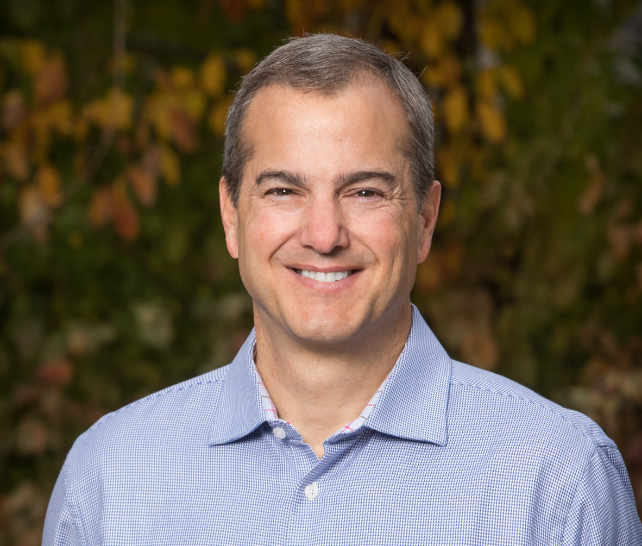We read and hear so much these days about how disruptive technology is going to be to our industry. About how different we’ll be when the impact of Blockchain and Robotic Process Automation and Artificial Intelligence is realized in just a few short years. I can’t wait to see what the world of the Jetson’s has in store for the banking industry! The fintechs are coming … the fintechs are here!
Yet, as we work through strategic planning sessions with clients this year, I’m continuously impressed by how, for the most part, the most important disruptive technology that’s going to have the greatest impact on our industry is right here in our hands today … it’s getting our people and cultures to deliver the absolute best member experience possible. If you want to truly transform your credit union in 2019, invest in your most transformative “technology” – your member service culture.
Jeff Bezos recently said that the number one reason for Amazon’s immense and impressive success is, simply, an “obsessive compulsive focus on the customer.” He called it their secret sauce and said they worry 100% about that and don’t care about what the competition is doing. Focusing squarely on the customer is what is driving Amazon’s profitability across the organization. Build your products and services because you love the customer, he said.
So, how do you build a culture that has an obsessive compulsive focus on member service? How do you align your organization to love your member? That’s a multi-faceted solution but here are six fundamental steps you should take:
- People – it’s easy to say that people are our most important asset. But it’s another thing to spend time, effort, and money to make sure you get the absolute best people and develop each to their fullest capability, especially in terms of member service. This is what Chick-fil-a does; they’re extremely selective in who they hire and once an employee is selected they invest heavily in their service skills and behaviors. And, for the most part, it shows every time you go into their restaurants.
- Behaviors – clearly defining behaviors is critical for two reasons: 1) everyone has a different definition of “service” and you want to make sure your employees understand your definition, and 2) you need to set the performance expectation at the outset so you can hold them accountable later on (see bullet point below). Saying, “my pleasure” doesn’t come naturally to most people so Chick-fil-a has set that behavior expectation to solidify their service standard and establish the detailed expectations for future service performance.
- Empowerment – once you’ve got the right people and defined their expectations you need to let them do their job. Often, we hear from employees that they don’t feel empowered to make exceptions to go the extra mile to make members happy. This is a hard step for many leaders, especially in a regulated industry like ours - we can’t just give away a free chicken sandwich or remake a milkshake (getting hungry yet?!) but we can give our well-positioned employees the autonomy to do other things outside the box to make members completely happy and satisfied.
- Teamwork – getting great employees is one step but getting them to jell as a team is another. This is becoming more challenging as we have multiple generations in the workforce today and so many different work expectations. But members expect consistency in service across all channels and that means having a cohesive organization clicking on all eight cylinders. Foster teamwork by cross-training as much as possible and getting staff from different departments working together regularly so they can be exposed to all areas of the credit union.
- Measurement – if you’re going to become obsessive about your member service, you need to adequately measure it for three reasons: 1) give it the optimal attention it deserves; 2) be able to celebrate successes; and 3) provide regular and consistent feedback to staff. Far too many credit unions measure service performance inadequately and, as a result, make false assessments of the organization’s and individual’s performance.
- Accountability – if you’re gonna go through the time, trouble and expense of establishing an obsessive, compulsive culture based on the five previous components, it would be criminal to not take the final step and hold everyone accountable. But yet that’s what happens in too many organizations. Everyone at every level needs to do their part. There can be no opt in/opt out option to delivering outstanding service. If you ever have an unpleasant experience in a Chick-fil-a, it probably won’t happen again because someone will be held accountable.
Addressing these areas and investing in them in 2019 will position your credit union to optimize the member experience, minimize the impact of others’ technology, and best position you to battle and win long into the future. The technology is coming but your members are already here – make sure you invest in your ability to give them the best experience today so they will use that new technology from you at some point in the future.
The retail landscape is littered with companies and brands that have succumbed to the advent of new technology and delivery channels, especially in the last ten years - we have referenced some like Blockbuster and Sears in previous articles. However, if those companies had been more in tune with their customers, they may have seen (or heard) that new tech coming long before it arrived and facilitated their ultimate demise.
So the message is: worry about what you can control – your service performance – and not so much about what you can’t – your competitors. It’s also to keep a discerning eye on the evolution of future tech but take discernable action on your current member experience e culture. Keep as many members as happy and satisfied as possible today and your credit union will still be thriving and relevant when that new space-age technology becomes reality tomorrow.
If your credit union needs help maximizing your member experience culture today, our firm would love to help. Please contact us at www.fi-strategies.com or 636-578-3280.







